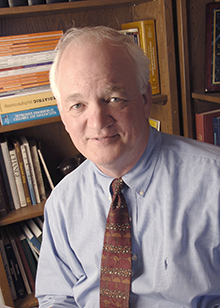How Effective Are Antidepressants in Youth?
Abstract
Of the 14 medications included in a recent meta-analysis, only fluoxetine was found to be statistically more effective than placebo at relieving symptoms of depression in youth aged 9 to 18.
Last month the Lancet published a comprehensive meta-analysis that concluded most antidepressants offer few benefits for the acute treatment of depression in children and adolescents.

Graham Emslie, M.D., noted that while the recent meta-analysis found no superiority for most antidepressants over placebo in acute symptom improvements compared to placebo, it did not address long-term benefits such as length of remission.
Of the 14 medications included in the analysis (amitriptyline, citalopram, clomipramine, desipramine, duloxetine, escitalopram, fluoxetine, imipramine, mirtazapine, nefazodone, nortriptyline, paroxetine, sertraline, and venlafaxine), only fluoxetine was found to be statistically more effective than placebo at relieving symptoms of depression in youth aged 9 to 18, while also demonstrating favorable tolerability ratings.
In contrast, nortriptyline was shown to be significantly less effective than placebo and several other medications, while imipramine was significantly less well tolerated than placebo as well as venlafaxine and duloxetine.
The findings attracted widespread media coverage, including renewed questions about the use of antidepressants in youth.
“Every decision about whether and what to prescribe needs a complex and partly intuitive calculation of the balance between harms and benefits according to the patient’s circumstances,” Jon Jureidini, M.B.B.S., Ph.D., a child psychiatrist at the Women’s and Children’s Hospital in Adelaide, Australia, wrote in a related editorial. The finding of the meta-analysis “has disturbing implications for clinical practice, concluding as it does that the risk-benefit profile of antidepressants in the acute treatment of depression does ‘not seem to offer a clear advantage for children and adolescents.’”
Graham Emslie, M.D., the Charles E. and Sarah M. Seay Chair in Child Psychiatry at the University of Texas Southwestern Medical Center, told Psychiatric News that while he does not question the accuracy of the findings, he cautions against drawing the conclusion that the findings suggests antidepressants cannot benefit some youth with depression.
“The results of this review are not much different from what we’ve known from other research, but none of these studies have proved the negative [that antidepressants are doing more harm than good], they have just failed to show the positive,” said Emslie, who was not involved with this study.
There are multiple reasons that a drug may fail to work significantly better than a placebo, Emslie explained. One reason why most of the antidepressants in this study appeared to be no more effective at treating depression in youth may be due to the fact that the response rates seen for the placebo groups showed dramatic differences (whereas the drug rates were fairly consistent). A higher than average placebo response runs the risk of masking a successful therapy, he said.
In addition to the varying placebo response rates in the trials, Andrea Cipriani, M.D., Ph.D., an associate professor of psychiatry at the University of Oxford and lead author on the Lancet paper, noted most of the 34 clinical trials had at least a moderate risk of bias, many had incomplete reporting of results, and several were unpublished.
The authors also noted that the analysis may not have been a thorough reflection of clinical practice, as trials recruiting participants with treatment-resistant depression, patients with subsyndromal depression, or treatment durations of less than four weeks were excluded.
While the meta-analysis compared short-term response to the antidepressants with placebo (the studies included ranged from 6 to 12 weeks in length), it did not compare remission, which considers the length of time that a patient feels better before relapsing as opposed to the degree of their improvement.
Although Cipriani and colleagues concluded that the findings support the use of psychotherapy as a first-line intervention and fluoxetine in patients with moderate-to-severe depression who do not have access to psychotherapy, Emslie questioned whether there is enough evidence to say one approach is superior to another.
“We should be arguing how we leverage all our options to provide the most effective treatments, rather than pitting them against each other,” he said.
David Fassler, M.D., a clinical professor of psychiatry at the University of Vermont College of Medicine who was not involved with this study, agreed.
“Medication can be helpful for some children and adolescents with depression, but medication alone is rarely the best intervention for these kids. We also know that many of these young people can be treated successfully without medication,” Fassler said. “Medication should be used only as part of a comprehensive plan, individualized to the needs of the child and family.”
The challenge, he continued, is to make sure that children and adolescents with depression and other psychiatric disorders have access to the most appropriate and effective treatment possible.
The Lancet meta-analysis was supported by a grant from the National Basic Research Program of China. ■



